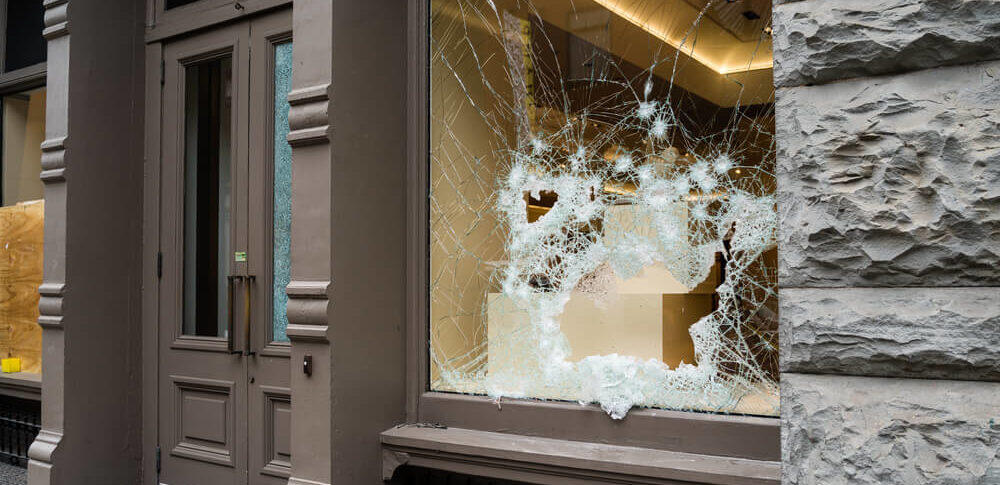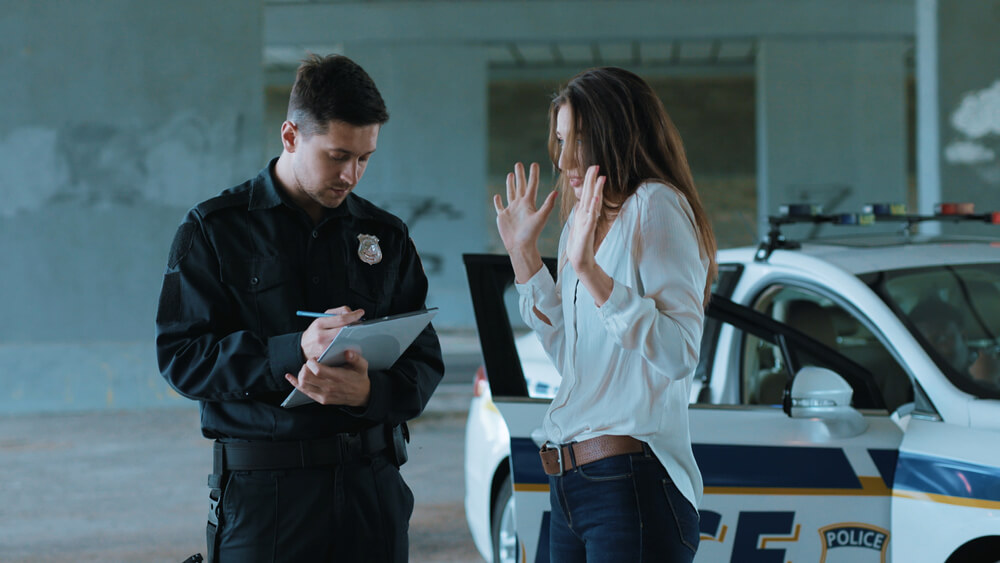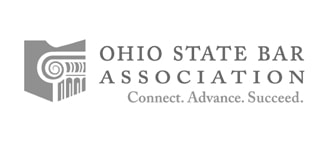
Are Businesses Responsible for Keeping You Safe From Criminals? An Analysis of Ohio Law
When we walk into a business – whether it’s a shopping center, parking garage, office building, or any other commercial location – we tend to take our own security for granted. Nobody can predict when a criminal will target them, but it happens every day, even in unlikely places. Our safety and that of our families depend on businesses taking reasonable actions to protect us from crime.
But what if a business fails to prevent criminal harm to its patrons? Is it legally responsible for the harm its patrons suffer? Under Ohio law, the answer is not clear-cut. Before a jury would ever hear an injured customer’s complaint against a business for negligent security, a judge must first consider whether the harm suffered was “foreseeable.”
Below is an in-depth explanation of Ohio law on business owner liability for the criminal acts of third parties. This summary is excerpted from the briefing in Davis v. Hollins, 2019-Ohio-1789.
In Davis, Eric Henry represented Tina Petree and the Estate of Jason Barry. In 2013, Tina and Jason walked through the parking lot of a grocery store in Columbus, Ohio. They were involved in an altercation with a driver who was driving too fast through the lanes. The driver escalated the conflict, and ultimately both Jason and Tina were intentionally run over by a second car – driven by the driver’s friend. Jason died almost instantly, and Tina suffered catastrophic injuries to her legs. After five years of litigation and numerous appeals, Eric Henry obtained a successful outcome for both Tina and Jason’s Estate.
Understanding Ohio Law
Generally, a business owes a customer a duty to exercise ordinary care and protect the customer by maintaining the premises safely. Desir v. Mallett, 10th Dist. No. 14AP-766, 2015-Ohio-2124, ¶ 23. The Ohio Supreme Court has held that “a business owner must warn or protect its business invitees from criminal acts of third parties when the business owner knows or should know that there is a substantial risk of harm to its invitees on [its] premises.” Simpson v. Big Bear Stores Co., 1995-Ohio-203, 73 Ohio St. 3d 130, 135, 652 N.E.2d 702, 705. “The test for foreseeability is whether a reasonably prudent person would have anticipated that an injury was likely to result from the performance or nonperformance of an act.” Simpson v. Big Bear Stores Co., No. 93AP-852, 1993 WL 540325, at *3 (10th Dist. 1993), aff’d sub nom. Simpson v. Big Bear Stores Co., supra.
Over the last several decades, Ohio has recognized two tests for determining whether a criminal act by a third party was foreseeable. One test looks for the existence of prior similar acts, which would suggest that the danger was foreseeable. See Hickman v. Warehouse Beer Sys., Inc. (1993), 86 Ohio App.3d 271, 620 N.E.2d 949; Montgomery v. Young Men’s Christian Ass’n (1987), 40 Ohio App.3d 56, 531 N.E.2d 731; Taylor v. Dixon (1982), 8 Ohio App.3d 161, 456 N.E.2d 558; Townsley v. Cincinnati Gardens, Inc. (1974), 39 Ohio App.2d 5, 314 N.E.2d 409.
More recently, Courts around the state have favored a “totality of circumstances” test. See Desir v. Mallett, 2015-Ohio-2124, ¶ 25. (Tenth District has adopted the totality of circumstances test). This standard considers the occurrence of previous similar crimes, the specifics of the incident itself, the propensity for criminal activity to occur on or near the location of the business, and the character of the business.” Id. at ¶ 25. Under the totality of circumstances analysis, a court must consider whether a reasonably prudent person would have anticipated an injury was likely to occur based on all reasonable considerations. Id.; See also Reitz v. May Co. Dep’t Stores, 66 Ohio App. 3d 188, 193, 583 N.E.2d 1071, 1075 (1990); Heimberger v. Zeal Hotel Grp., Ltd., 2015-Ohio-3845, ¶ 18, 42 N.E.3d 323.
The first application of the totality of circumstances test in Ohio came from the Eighth District in Reitz v. May Co. Dep’t Stores, 66 Ohio App. 3d 188, 193, 583 N.E.2d 1071, 1075 (1990). In that case, a customer who was stabbed and carjacked in a department store parking lot brought suit against the lot owner. Id. at 190, 1073. The Reitz Court adopted a “totality of the circumstances” standard after examining “the issue of what evidence is relevant to establishing foreseeability for the purpose of determining whether a business owes a duty toward its patrons for the criminal acts of third parties.” Id. at 192, 1074. The Court’s main consideration was determining whether the premise owner had, or should have had, knowledge of the criminal threat on its premises such that it triggered the duty to act. Id. at 193, 1074-1075.
The Reitz Court adopted the totality of circumstances test to avoid the imprecision of a bright-line standard attempting to define when a similar prior act(s) would make a subsequent criminal act foreseeable. Instead, the totality of the circumstances test empowered the Court to consider the entirety of the specific facts of each case:
[The totality of circumstances test] does not require that exact injury to have occurred before, and it certainly does not require the exact mechanism of injury to have been previously employed. By adopting the “totality of the circumstances” standard, the first victim is not necessarily precluded from establishing foreseeability, and the finite distinctions between how similar prior incidents must be is avoided.
Id. at 1071, 1075 (emphasis added). Ultimately, the Eighth District found the plaintiff’s assault was not foreseeable based on the totality of circumstances, including 37 prior instances of reported criminal activity in the parking lot in the three years preceding the attack, the fact that the lot was not in a high crime area, and the only similar incident was more than three years before. Id.
The rationale for the totality of circumstances test is self-evident: – if all indicators point to a premise being unreasonably dangerous, the responsible parties must take reasonable measures to warn or protect invitees. See, e.g., Simpson, supra, 73 Ohio St. 3d at 135, 652 N.E.2d at 705. See also Rush v. Lawson Co., 65 Ohio App. 3d 817, 820, 585 N.E.2d 513, 514–15 (1990)(“In other words, did previous experience on the premises create a duty to provide additional protection for business invitees?”). See also Wheatley v. Marietta Coll., 2016-Ohio-949, ¶ 61, 48 N.E.3d 587, 608–09, appeal not allowed, 2016-Ohio-4606, ¶ 61, 146 Ohio St. 3d 1428, 52 N.E.3d 1204, reconsideration denied, 2016-Ohio-5585, ¶ 61, 146 Ohio St. 3d 1493, 57 N.E.3d 1172 quoting Hetrick v. Marion–Res. Power Co., 141 Ohio St. 347, 358–59, 48 N.E.2d 103 (1943):
Negligence is…always a question of what reasonably prudent men under the same circumstances would or should, in the exercise of reasonable care, have anticipated. Reasonable anticipation is that expectation created in the mind of the ordinarily prudent and competent person as the consequence of his reaction to any given set of circumstances. If such expectation carries recognition that the given set of circumstances is suggestive of danger, then failure to take appropriate safety measures constitutes negligence. On the contrary, there is no duty to guard when there is no danger reasonably to be apprehended.
“Because criminal acts are largely unpredictable, the totality of the circumstances must be ‘somewhat overwhelming’ in order to create a duty.” Reitz, supra, 66 Ohio App. 3d at 193-194. “Three main factors contribute to a court’s finding the evidence insufficient to demonstrate the foreseeability of a crime as a matter of law: (1) spatial separation between previous crimes and the crime at issue; (2) difference in degree and form between previous crimes and the crime at issue; and (3) lack of evidence revealing defendant’s actual knowledge of violence.”Heimberger v. Zeal Hotel Grp., Ltd., 2015-Ohio-3845, ¶ 18, 42 N.E.3d 323, 330. See also Wheatley, supra, at ¶ 65: (“The totality of the circumstances test allows consideration of all relevant evidence, which may include (1) prior similar incidents; (2) other criminal activity occurring on or near the premises; and (3) the location and character of the business.”).

A Plaintiff’s Evidence Must Be “Somewhat Overwhelming”
Courts have found that significant criminal activity, including repeat instances of violence, “somewhat overwhelming” evidence of the foreseeability of criminal acts. In Allison v. McDonald’s Restaurants, the Eighth District reversed summary judgment for the defendant fast food restaurant, finding reasonable minds could find the drive-thru attack on its customer foreseeable. No. 63170, 1993 WL 453689, at *2 (8th Dist. 1993). The plaintiffs’ evidence consisted of several hundred crime reports from four years preceding the attack, along with the testimony of a security expert that McDonald’s should have anticipated the attack. See also Simpson v. Big Bear Stores Co., 1995-Ohio-203, supra, (holding that nine prior purse-snatchings put the defendant on notice that patrons “were at risk of being attacked.”); Monnin v. Fifth Third Bank of Miami Valley, N.A., 103 Ohio App. 3d 213, 658 N.E.2d 1140 (2nd Dist. 1995)(“Evidence showed that [defendant bank] had been robbed twice before, most recently about two and one-half years earlier. Reasonable minds could find [it] knew, or should have known, that an armed robbery could again occur at that location”). But see McLaughlin v. Speedway, L.L.C., 2016-Ohio-3280 (Evidence of foreseeability was “not somewhat overwhelming” where plaintiff testified the area was safe, prior incidents of crime had been nonviolent, and sole similar incident near the premises did not involve a customer of appellee.).
The Tenth District’s most recent application of the totality of circumstances test came in Heimberger v. Zeal Hotel Grp., Ltd., 2015-Ohio-3845, 42 N.E.3d 323. In Heimberger, plaintiffs had just concluded a business meeting in a hotel lobby when a “stranger entered the hotel through the front door, stole [plaintiff’s] handbag, and exited the same door.” Id. at ¶ 2, 42 N.E.3d at 327. Plaintiffs brought suit against the hotel for, inter alia, emotional distress. Id. In support of their argument that the purse snatching was foreseeable, plaintiffs produced police reports for calls made from the hotel showing approximately 15 calls, ranging from a guest who had failed to check out unruly individuals to suspicious vehicles. Id. at ¶ 20, 42 N.E.3d at 331.
Although the police reports were unverified by testimony as required by Civ. R. 56, the Tenth District analyzed them to find the only prior incident in the hotel lobby involved an unruly guest who had to be escorted out by the police. Id. at ¶ 22, 42 N.E.3d at 331. Plaintiffs also offered evidence of a surveillance video that purported to show a “suspicious person” lingering around the hotel on the night of the incident. Id. at ¶ 24, 42 N.E.3d at 332. See infra. In addition to the minimal criminal activity offered by plaintiffs in Heimberger, plaintiffs did not put forth evidence that the premises was located in a high crime area or that defendants had knowledge of a criminal threat. The Tenth District found the totality of circumstances failed to rise to the threshold of “somewhat overwhelming” and affirmed summary judgment for the defendant-hotel owner. Id. at ¶ 27, 42 N.E.3d at 332. See also infra.
Dangerous Surroundings Make Reasonable Security Measures Necessary
Although the area surrounding the hotel in Heimberger was not a high-crime area, the high-crime nature surrounding a property may be sufficient in and of itself to make harm on the property foreseeable. Knor v. Parking Co. of Am., 73 Ohio App. 3d 177, 184, 596 N.E.2d 1059, 1063 (1991). In Knor, the First District affirmed the Trial Court’s denial of a parking lot owner’s motion for summary judgment on a claim for injuries brought by an invitee who had been abducted from the lot. The First District held:
One two-part issue is whether the defendant should have been on notice that the parking lot was located in a high-crime area, thus making it likely that an incident, such as that occurring to the plaintiff, was reasonably foreseeable. The issues of notice and foreseeability posed factual questions that could only be determined at trial.
73 Ohio App. 3d at 186–87, 596 N.E.2d at 1064–65. The Knor Court also found that police reports are credible evidence for the non-hearsay issue of the defendant’s notice:
The reports were not offered into evidence to prove the truth of the matter asserted, i.e., that the victims in the reports were actually robbed or assaulted. Instead, the plaintiff was trying to prove a fact that was an issue in the case, that the incidence of reported crime in and around the defendant’s parking lot was high and that the defendant had noticed that fact.
73 Ohio App. 3d at 184, 596 N.E.2d at 1063.
Ample evidence that a parking lot was located in a high crime area convinced the Eighth District that plaintiffs had raised a material issue of fact regarding the foreseeability of a rape and robbery in Doe v. Sys. Parking, Inc., 79 Ohio App. 3d 278, 607 N.E.2d 88 (1992). In Doe, the court noted the parking lot attendant armed himself with a pipe and locked himself in his booth, and considered the testimony of a security expert who testified that based on the “place and character of appellee’s business,” it provided targets for criminal activity. 79 Ohio App. 3d at 279, 607 N.E.2d at 88–89. In reversing summary judgment, the Eighth District was careful to note that it was on the record before it alone that it found factual issues and was not expanding property owners’ liability. Id. See infra.
An Owner Cannot Deny Foreseeability of a Threat When Actual Knowledge of That Threat Exists
The clearest indicator that a harm is foreseeable is a premises owner’s actual knowledge of the threat. Summary judgment for a defendant is improper when a plaintiff introduces evidence suggesting that the owner had actual knowledge of the threat. See, e.g., Snow v. Fraternal Order of Eagles, Mansfield, Ohio Post No. 336, No. 93-CA-22, 1993 WL 500297 (Ohio Ct. App. Nov. 18, 1993).
In Snow, patrons were attacked in a parking lot after leaving a tavern. Id. at *1 Just as in the present case, the dispute started after someone had shouted at the assailants to “slow down” as they sped through the parking lot. Id. Unlike here, however, the premise owner had taken the affirmative step of installing a security guard in the parking lot. Id.
The Fifth District reversed summary judgment, finding the plaintiff’s assault foreseeable. Id. at *2. It based its decision on the fact that the owner was “aware of numerous criminal incidents in the immediate area [as well as] vandalism and theft to the contents of vehicles in the lot.” Id. Such actual knowledge of a threat “when viewed in a light most favorable to appellants, creates a genuine issue of material fact as to whether [the owner was] on notice that harm was likely to occur to one of its patrons.” Id.
Testimony from a former employee suggesting an owner’s actual knowledge of criminal conduct on the premises also mandated a reversal of the summary judgment in Rush v. Lawson Co., 65 Ohio App. 3d 817, 585 N.E.2d 513 (1990). In Rush, an invitee brought suit after being assaulted in the parking lot of a convenience store. Id. The store moved for summary judgment and produced an affidavit in support, stating “since the opening of the store at 588 North Main Street, Marion, Ohio on November 17, 1967, until August 21, 1984, no assaults or other criminal activity occurred in the parking lot area at said store.” Id.
In opposing, plaintiffs produced a police index showing “eleven armed robberies and forty-eight shoplifting offenses” in the fourteen years preceding the plaintiff’s assault. Id. at 819, 513-14. Plaintiffs also produced an affidavit from a former employee, who stated that the defendant was aware of “criminal activity” and that:
In spite of the criminal activity, no warning signs or extra security was given to customers concerning the occurrences. Even after being made aware of the criminal conduct and threats to the safety of the employees and customers, management did nothing to increase security for the customers and employees. It was just a matter of time until someone got seriously hurt, and Lawson’s and their management were aware of the likelihood that someone would get injured. During my employment and the months immediately preceding August of 1984, I was aware of at least four or five calls per week to police involving criminal activity both inside and outside the store.
Id. The Third District reversed summary judgment for the store. Id. at 820, 514-15. It found that, although the plaintiffs’ evidence was “tainted by the subjectivity of the former Lawson employee [it] was nonetheless sufficient to pose a genuine factual issue as to foreseeability.” Id.
Security Measures Make Crime Less Foreseeable
One consideration in evaluating the foreseeability of criminal acts is whether the owner has implemented some measure of security to mitigate the threat. In that case, the owner may reasonably believe that subsequent crime is unlikely. See, e.g., Tabor v. Target Corp., No. 2:15-CV-2508, 2017 WL 749201, at *6 (S.D. Ohio Feb. 27, 2017)(“[A]n armed robbery is even less foreseeable in a parking lot with multiple, visible cameras and multiple signs informing passersby that they are being surveilled.”). Thus, in evaluating the totality of circumstances, a court may consider whether the owner was relying on existing security in determining harm to invitees was not foreseeable.
Let's do this together
Contact me today to discuss your case at no charge and with no-strings-attached.
(*) - Required field

Office: 440-337-0083
Fax: 440-337-0084
Suite 18
Chagrin Falls, OH 44023





